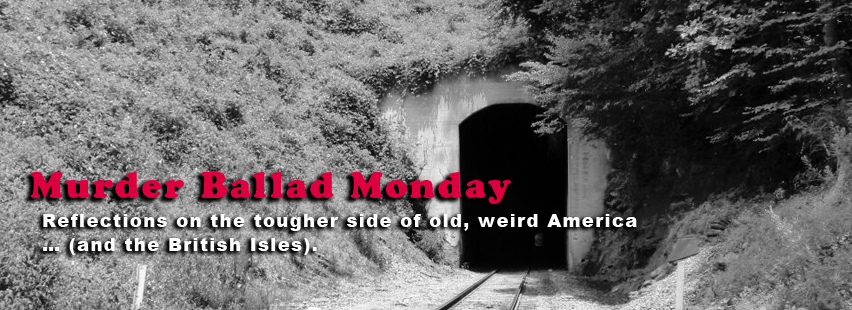Three Fishers
“Many to keep”

“But Men Must Work and Women Must Weep” (1883), by Walter Langley (1852-1922) image (c) Birmingham Museums and Art Gallery
This won’t surprise long term readers, but I’ve concluded I have an excessive attachment to tragedy, as an art form. I also have a certain vicarious nostalgia for lost ways of life that I was never a part of: rural fishing villages, small towns, the rock concert scene of the late 70s. We all have our analogues, I suppose, for remembered/imagined places like the Muhlenburg County of John Prine’s song “Paradise.”
I discovered Stan Rogers‘s music a little over 20 years ago, although I later realized I had heard a few of his songs as a teenager on the radio and on tapes made by others. I knew some of the songs then, but not who sang them. When I picked up Home in Halifax for the first time, Rogers’s legend and his music captured my musical imagination.
As I rapidly finished collecting all of Rogers’s CDs, I picked up his For the Family, which was described as a collection of family favorites, written by others, drawing from his heritage in the Maritimes. Although Rogers was born and raised in Ontario, his extended family’s real home was in Nova Scotia, and he spoke and sang from the heart of his close emotional connection to the lives lived along the Chedabucto shore. “Three Fishers” feels like a progenitor of the songs Rogers wrote about those lives.
“Three Fishers” started as a poem by English clergyman Charles Kingsley in the 19th century. Whether the poem or the earlier versions of it as a folk song actually was a family favorite, its thematic echoes in other Stan Rogers songs like “The Jeannie C.” and “Make and Break Harbour” are clear to hear. It bears the marks of a song from an earlier age, but tells a story all too familiar to those who made their living in fishing boats in the Maritimes of Rogers’s remembrance and imagination.
On For the Family, “Three Fishers” begins with gentle guitar arpeggios, soon followed by Rogers’s sonorous baritone. Fellow Canadian musician Nancy White once described as Rogers’s voice as “a voice you could take a bath in.” He sings the song’s tale of three fishermen who go out to sea at sunset, get caught up in a sudden and violent storm, and drown at sea; their corpses washing ashore at dawn.
(Lyrics below)
Rogers’s younger brother, Garnet Rogers, adds an echoing fiddle in accompaniment on the recording, first in a break, and then soaring along behind his brother’s rich voice. Garnet arranged “Three Fishers” for the album, and his arrangement stands, over thirty years later, as more influential than the original for recent recordings of the song. He describes this recording’s origins in the liner notes for For the Family: “Stan brought this poem to rehearsal one day with the idea that we could work it into an accapella [sic] tune. I perverted his fragment of melody to my own ends and added the Jimi Hendrix violin.”
Rogers recorded the tracks for For the Family in October 1982. As the album was nearing release, he traveled the folk circuit, playing at festivals, clubs, and concert halls. In the liner notes for Rogers’s From Fresh Water (also released posthumously), Emily Friedman writes that “He was always on the road, pursuing his dream of establishing an international identity for Canadian songwriting. It was a dream fulfilled, through his constant touring, dynamic performances, and brilliant songs.”
Returning home from the Kerrville Folk Festival on June 2, 1983, he was on Air Canada flight 797 from Dallas to Toronto. An in-flight electrical fire began in the plane’s washroom, spreading toxic smoke through the cabin. The fire forced an emergency landing at the Cincinnati airport in Hebron, Kentucky. Stan Rogers was among the 23 people who died as passengers and crew evacuated the plane on the ground. As Garnet Rogers wrote for the liner notes of For the Family, “We lost him in mid-stride of a career that was seemingly just starting to take off.” He was 33.
Although his work was nowhere near as dangerous as the fisherman, farmers, and other laborers about whom he sang, that Stan Rogers passed away in the course of the demanding travel schedule created by his work also nudged me to write about this song for this Labor Day post. Kate Wolf‘s musical tribute to Rogers, the song “All He Ever Saw Was You,” contains the lines “The candle’s burning at both ends, it’s burning in the middle. There’s no time to stop between the guitar and the fiddle.” She sings of Rogers’s drive to do his work in front of audiences across the continent, but also the constant calls of home, and the sense that there was “never enough time.” I actually knew of Eric Bogle‘s tribute to Rogers, “Safe in the Harbour,” long before I knew it was inspired by Rogers, or even knew of Rogers’s work at all. It too is a fitting nautical elegy for the Rogers’s own type of working voyage, now “safe in the harbour at last.”
“Three Fishers” is on its face a lament for those lost to dangerous work, and a call to sympathy with the dangers workers face. It is also implicitly a reflection on work’s sacrifices even for those in more genteel stations. A subtle resonance between the positions of artist and worker is not far from where the song began its life. I wanted to place the Rogers recording in that context, which has the added virtue of showing how this song was itself able to “rise again,” through the talents of three men named Rogers.


